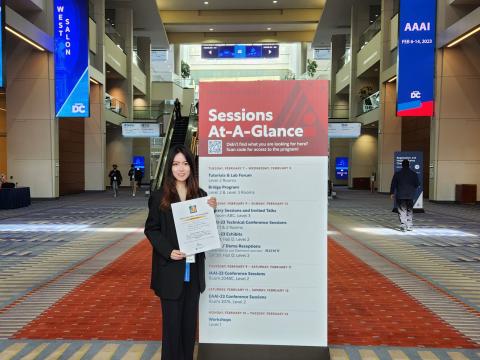Zichen Chen Receives the Innovative Application of AI Award from AAAI

Zichen‘s paper titled “Efficient Training of Large-scale Industrial Fault Diagnostic Models through Federated Opportunistic Block Dropout” won the Innovative Application of AI award from the Association for Advanced Artificial Intelligence (AAAI) on February 9th, 2023. The paper was presented during the 35th Annual Conference on Innovative Applications of Artificial Intelligence (IAAI-23) held in Washington DC, USA from 7 to 14 Feb 2023. The IAAI Conference, through the Innovative Applications of AI Awards, honours case-study papers that describe deployed applications with measurable benefits that include some aspects of AI technology (https://aaai.org/about-aaai/aaai-awards/).
The team from Nanyang Technological University led by Prof. Han Yu and Zichen have proposed a new Federated Opportunistic Block Dropout (FedOBD) approach for efficient industrial fault diagnostics using AI. Collaborative fault diagnostic model training, especially for complex industrial systems, often requires the use of federated learning (FL) to leverage distributed data. However, the large-scale industrial fault diagnostic models and the non-exclusivity of communication channels in such systems make it challenging to efficiently train models across multiple institutions.
To overcome this challenge, the FedOBD approach decomposes large-scale models into semantic blocks, enabling FL participants to upload selected important blocks in a quantized manner, reducing communication overhead without compromising model performance. FedOBD has been successfully deployed in collaboration with the ENN Group (https://www.enn.cn/) to build industrial fault prediction models for two coal chemical plants across two cities in China. The approach significantly reduced training communication overhead by over 70% compared to the previous AI Engine while maintaining model performance at over 85% test F1 score. FedOBD is the first dropout-based FL approach to be successfully deployed.
Read the full paper here.